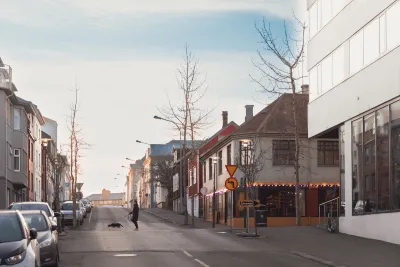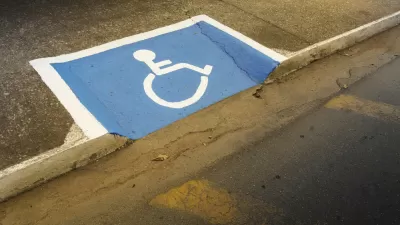Cities around the country installed over 1,700 wheelchair ramps in the last five years, thanks in part to one man’s initiative.

A small organization that began in Reykjavík, Iceland has grown into a veritable movement, installing almost 2,000 wheelchair ramps in public spaces all over the country where accessibility was an issue. As Margaret Andersen explains in Fast Company, “In many older cities around the world, accessibility standards are inconsistent, and the push to retrofit historic areas is often delayed or deprioritized in favor of architectural preservation.”
The project, called Ramp Up Iceland, designs ramps individualized to each location that work with existing materials and aesthetics. “In many cases, passersby wouldn’t even notice modifications to the historic buildings because the ramps are intentional design choices built into the urban environment.” The project was initially started and funded by Haraldur “Halli” Thorleifsson, a tech entrepreneur who uses a wheelchair, but has grown into a partnership with local governments and other groups.
A study conducted in the United States, where federal law technically requires accessibility in all public spaces, found that 60 percent of people with a disability were unable to complete a necessary task because they couldn’t access a building, and sidewalks and transit facilities remain inaccessible in many U.S. cities.
FULL STORY: Iceland built 1,756 wheelchair ramps in the past 4 years. Why can’t other countries do that?

Planetizen Federal Action Tracker
A weekly monitor of how Trump’s orders and actions are impacting planners and planning in America.

Maui's Vacation Rental Debate Turns Ugly
Verbal attacks, misinformation campaigns and fistfights plague a high-stakes debate to convert thousands of vacation rentals into long-term housing.

San Francisco Suspends Traffic Calming Amidst Record Deaths
Citing “a challenging fiscal landscape,” the city will cease the program on the heels of 42 traffic deaths, including 24 pedestrians.

Defunct Pittsburgh Power Plant to Become Residential Tower
A decommissioned steam heat plant will be redeveloped into almost 100 affordable housing units.

Trump Prompts Restructuring of Transportation Research Board in “Unprecedented Overreach”
The TRB has eliminated more than half of its committees including those focused on climate, equity, and cities.

Amtrak Rolls Out New Orleans to Alabama “Mardi Gras” Train
The new service will operate morning and evening departures between Mobile and New Orleans.
Urban Design for Planners 1: Software Tools
This six-course series explores essential urban design concepts using open source software and equips planners with the tools they need to participate fully in the urban design process.
Planning for Universal Design
Learn the tools for implementing Universal Design in planning regulations.
Heyer Gruel & Associates PA
JM Goldson LLC
Custer County Colorado
City of Camden Redevelopment Agency
City of Astoria
Transportation Research & Education Center (TREC) at Portland State University
Jefferson Parish Government
Camden Redevelopment Agency
City of Claremont





























